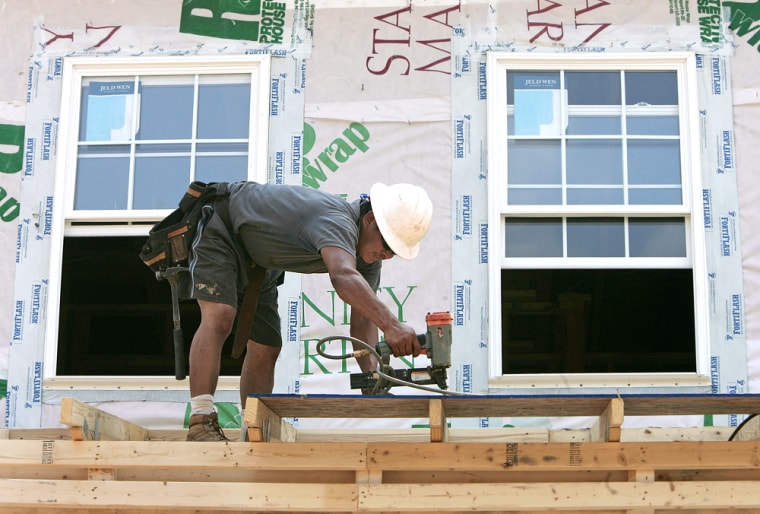Sales of new U.S. homes jumped 6.5 percent to a record high in July, defying economists' expectations for a decline, as purchases soared in the Northeast and West and median prices dropped, a government report showed on Wednesday.
The Commerce Department said new single-family home sales rose to a seasonally adjusted annual rate of 1.410 million units from a downwardly revised 1.324 million unit rate in June. The July sales pace was 27.7 percent higher than a year earlier.
Economists had expected new home sales to drop to a 1.333 million unit pace from June's originally reported 1.374 million unit pace.
While sales climbed, so did supply. The inventory of homes available for sale at the end of July stood at a record 460,000, up 1.8 percent from June and 15 percent higher than a year ago, the report showed. At the current sales pace, the supply of homes represented 4 months' worth in July.
The median price of a new home dropped for the third consecutive month, down 7.2 percent to $203,800 from $219,500 in June and off 4 percent from the price a year ago, the Commerce Department report said. The July sales price was the lowest since December 2003, when it hit $196,000.
The housing sector has been on a tear for more than four years, with home sales and construction striking regular records on the back of stubbornly low mortgage rates that drove demand. While economists now expect 2005 to be another record year, the sector began to show some signs of softness last month, as resales of previously owned homes dropped 2.6 percent and supply started to climb.
Mortgage rates continue to hover at historically low levels. The 30-year fixed-rate mortgage averaged 5.80 percent last week, lower than a year ago, according to data from finance company Freddie Mac.
Long-term rates should climb over the next year, economists say. The Mortgage Bankers Association pegged rates at 6 percent by year-end and 6.5 percent by the end of 2006. That should slow housing activity and put some downward pressure on prices, which have climbed by double-digit percentages in some areas, economists said.
In July, sales of new homes climbed 36 percent in the U.S. West and 10.1 percent in the Northeast but fell 13.5 percent in the Midwest and 3.5 percent in the South, the report said.
